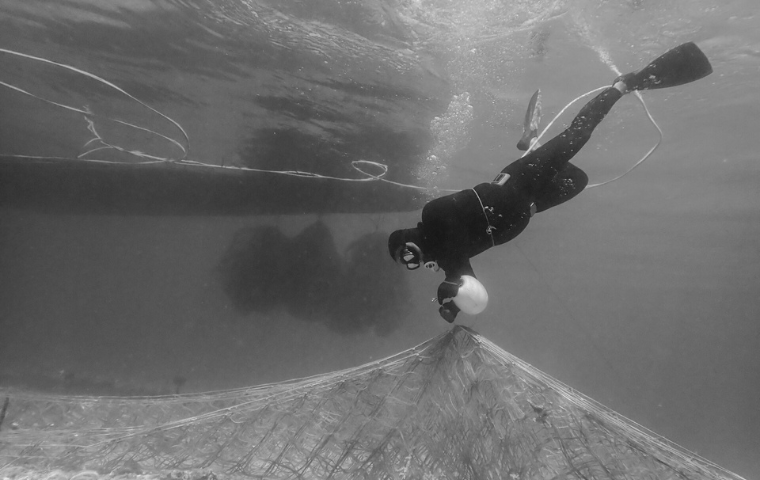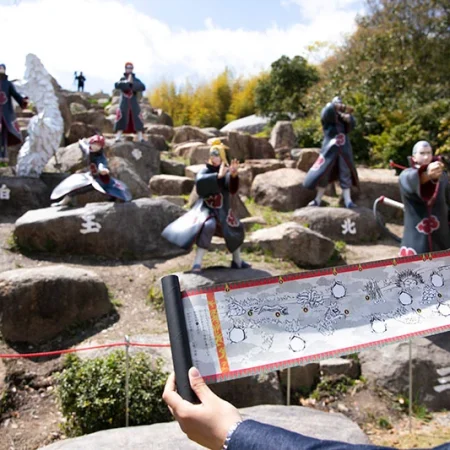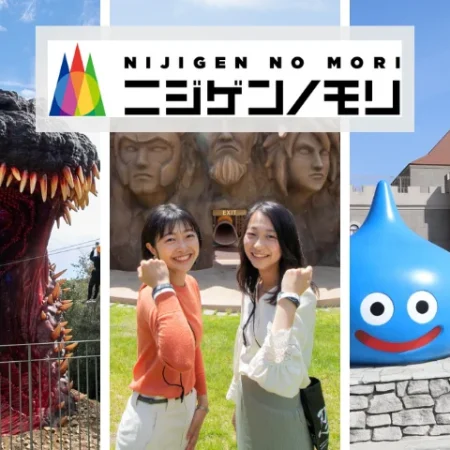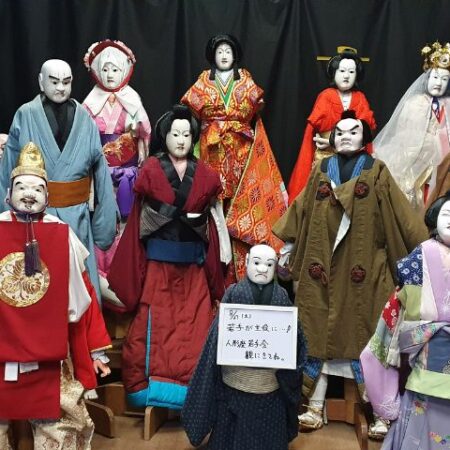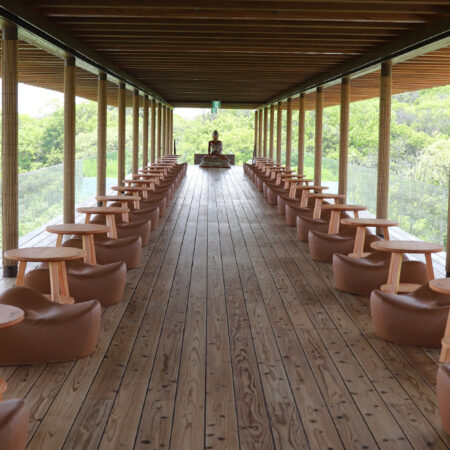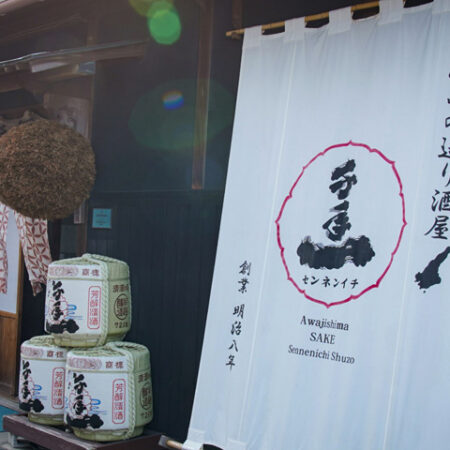Are you fascinated by Japan’s history? Perhaps you’ve delved into tales of iconic figures like samurai and war generals. But there’s a lesser-known group that’s just as pivotal: the Ama divers. In this article, let’s uncover what sets them apart and how they’ve left their mark on Japan’s story.
Table of Contents
- Learn About Ama Divers in Japan
- The Pivotal Role of Ama in the History of Japan
- The History of Ama Traces Back to Ancient Times
- Recorded Many Times in Nihon Shoki on Awaji Island, the Birthplace of Japan
- The Aman People of Awaji Island Supported the Emperor during Ancient Times
- Utilized Advanced Technology and Maritime Expertise to Transport Food
- Aman no Shokutaku: Respecting the Ama Culture and History of Japan
- Closing
Learn About Ama Divers in Japan

Professional Divers Collect Shells, Seafood, Seaweed, etc.
The term “Ama” originates from “海人” (sea person), and refers to professional divers who free dive to gather seashells, seafood, and seaweed from the seabed. But don’t mistake them for ordinary divers; Ama are highly skilled professionals who depend on their diving speed, lung capacity, intuition, and unwavering determination to excel in their craft. The term “Ama” dates back to at least 750 AD, possibly even earlier, featuring prominently as it does, in ancient Japanese myths and tales.
Traditional Diving Technique Using Special Breathing Techniques
While the tradition persists today, the original diving techniques of the ama are slowly being lost over time. Originally, they employed remarkable skills to dive depths of up to 30 meters using a special breathing technique, known as Isobue, to collect pearls. Their dives lasted a few minutes. When resurfacing they make a sound called “sea whistle”.
From Fundoshi (loincloth) to Wetsuit
In traditional practice, Ama would dress only in a fundoshi (loincloth) or a cloth wrapped around their hips, along with a headscarf. However, as the pearl industry grew and foreign customers became more prevalent, they adopted full-body white costumes and wet suits.
Only Around 500 Ama Left in Japan.
This change in attire was influenced by practical needs and the changing dynamics of their profession. The existence and knowledge of the Ama are immensely valuable, given the dwindling number of Ama divers in Japan. It’s estimated that there are only around 500 Ama left in Japan.
The Pivotal Role of Ama in the History of Japan
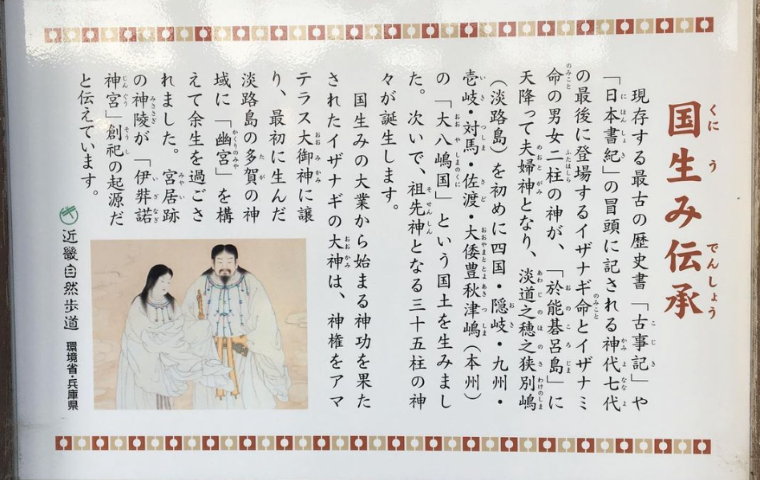
The History of Ama Traces Back to Ancient Times
The history of Ama traces back to ancient times, documented in numerous historical texts such as the Kojiki, Nihon Shoki, and Man’yōshū. While “Ama” commonly refers to women divers, historical records suggest that the term encompasses more than just diving. Instead, it encompasses individuals whose livelihoods are intertwined with the sea and ocean.
Recorded Many Times in Nihon Shoki on Awaji Island, the Birthplace of Japan
Given that Awaji Island is regarded as the birthplace of Japan in the Kojiki and Nihon Shoki, it’s no surprise that many narratives intertwine the Ama and Awaji Island. The Ama from Awaji Island are documented in The Nihon Shoki on multiple occasions, including during the Kofun period.
The Aman People of Awaji Island Supported the Emperor during Ancient Times
One account depicts the Aman of Awaji Island, individuals assembled to row boats transporting the Emperor’s wife to Kibi (modern-day Okayama), and dispatched to the Korean Peninsula before Emperor Nintoku’s reign. Additionally, they are described as a naval force entrusted with protecting the emperor. This portrayal suggests that these sea people, intimately connected with the ocean, played a pivotal role in supporting royalty during ancient times.
Utilized Advanced Technology and Maritime Expertise to Transport Food
Awaji Island also referred to as “Miketsukuni”, boasts a storied past of providing sustenance to the imperial court during the Yayoi period (c. 300 BCE – c. 250 CE). It’s believed that the Ama people of Awaji Island played a crucial role in this endeavor, utilizing their advanced technologies and maritime expertise to facilitate transportation.
Aman no Shokutaku: Respecting the Ama Culture and History of Japan

The Ama culture, though diminished over time, deserves utmost respect and appreciation for its profound impact on shaping Japan’s history across generations. Awaji Island has taken a commendable step by honoring this heritage through the creation of a unique restaurant, Aman no Shokutaku.

On the first floor, “Utage” stands out for its utilization of fresh seafood, reminiscent of Awaji Island’s historical role in providing the finest seafood to emperors. It is also known for its “Pirate Cuisine,” carrying on culinary traditions passed down through generations. Meanwhile, the second floor, “Sajiki,” offers a delightful experience with teppanyaki and sukiyaki, showcasing meticulously selected Awaji beef and locally sourced vegetables.
Click here for reservations Utage Click here for reservations Sajiki
| Name | Aman no Shokutaku 1F Utage 2F Sajiki |
|---|---|
| Address | 1042 Nojima-Tokiwa, Awaji City, Hyogo Pref. 656-1726 |
| Tel | "Utage” 0799-70-9089 “Sajiki” 0799-70-9090 |
| Operation Hours | “Utage”: Weekdays 11:00~21:00 (L.O. 20:00) / Sat., Sun. & Holidays 10:30~21:00 (L.O. 20:00) “Sajiki” 11:00~15:00 / 17:00~21:00 (L.O.19:30) Closed: Tuesdays |
| Website | https://amannoshokutaku.jp/ |
| Reservations: Utage | https://www.tablecheck.com/en/shops/aman-utage/reserve |
| Reservations: Sajiki | https://www.tablecheck.com/en/shops/aman-sajiki/reserve |
| Review: Utage | https://www.tripadvisor.com/Restaurant_Review-g1022838-d24037141-Reviews-Aman_No_Shokutaku_Utage-Awaji_Awaji_shima_Hyogo_Prefecture_Kinki.html |
| Reservations: Sajiki | https://www.tablecheck.com/en/shops/aman-sajiki/reserve |
Click here for details of Aman no Shokutaku
Closing
The concept of “Ama” has undergone an evolution over time, originally encompassing a broader group whose livelihoods were tied to the sea, gradually narrowing to denote professional women divers. However, even this more recent definition of Ama is facing decline, underscoring the rich history of a tradition that has profoundly influenced Japan for over 2000 years.
Despite often being overshadowed in the media by other elements of Japanese culture, the Ama people hold a vital place in shaping Japan’s history and cultural identity. Their significance and remarkable contributions, spanning millennia, should be remembered and celebrated.



